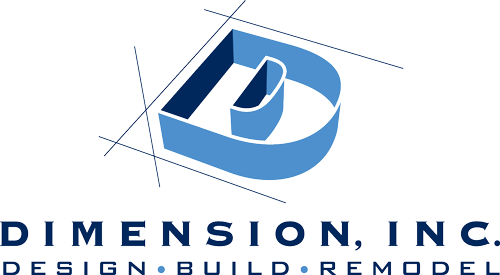Historic homes in Wisconsin have stood through a century or more of change. With all the ongoing maintenance and challenges, they are a labor of love for those who own them. If you enjoy the timeless details and architectural bones of your old house, but you’ve reached the point where renovation is necessary to make it safe and functional, the professionals at Dimension Design-Build-Remodel, Inc. know the ins and outs of these unique projects. Here is what you need to know about renovating historic homes.
There may be official guidelines and limits to follow
If the home is truly historical (and not just an old house), there will be guidelines that need to be followed. To verify if a home is in a historic district, we would call the local and state historic preservation offices before beginning any project. We may have to submit an application and have the property evaluated. A Certificate of Appropriateness (COA) from the Historic Preservation Commission may be required. It’s also possible to receive a tax credit or grant for work on a historic building rehabilitation.
Restoration is different from renovation
While renovation is usually about modernizing a home, restoration is about maintaining the home’s original character. This requires an understanding of the home’s important historic features in order to preserve them. Historic homes should not be gutted! The good news is repairing historic features is usually less expensive than replacing them.
Know your materials—and repair them
Unlike plastic, original wood windows can last centuries if maintained. Care for your masonry with tuckpointing maintenance and use in-kind materials when making replacements, only removing mortar if it has deteriorated. Have a good understanding of your steam radiators. Even woodworking methods should be replicated, using hand tools rather than modern machines.
Historic homes can be made more energy efficient
Water leaks and energy efficiency are understandably a priority to home owners. While preserving a historic home’s integrity must be the primary consideration, making it watertight and efficient can be secondary. Using less dramatic improvements than gutting the house, we can prevent water damage and find ways to lessen the drafts that are so common to an old house—without hurting its character.
We may encounter unpredictable challenges
Surprises often occur while renovating historic homes. Many old houses have been through renovations before, and there’s no telling what kind of problems are waiting behind walls and under floors. For example, important structural beams may have been cut through during the installation of central heating or indoor plumbing.
Understand the extra expense
Renovating historic homes is a very customized task, and the right contractor will be going the extra mile to be a good steward of history. When unexpected challenges occur, it may mean extra costs for a project that is likely already taking more time, effort, thought, and money than an average remodel on a modern house.
You need a contractor you can trust, who will discuss your project honestly and work with integrity. Renovating historic homes isn’t just another job to us. If you’re feeling overwhelmed, the Dimension team can help you prioritize what needs to be done now, and what can be put on the to-do list for down the road. We would be happy to discuss your historic home—call us at 262-402-6602 or complete our contact form to get your project started.
